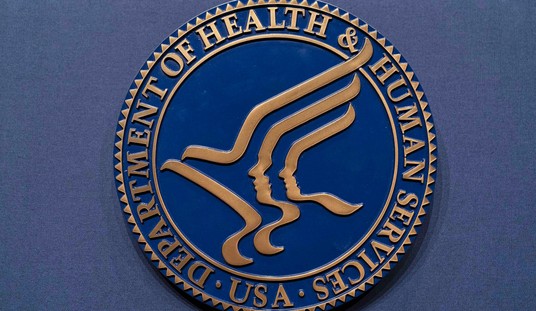
Several media outlets have received advance copies of a couple of reports prepared for the Senate Intelligence Committee detailing, so they claim, Russia’s use of social media to attempt to interfere in the 2016 election.
The efforts to manipulate Americans grew sharply in 2014 and every year after, as teams of operatives spread their work across more platforms and accounts to target larger swaths of U.S. voters by geography, political interests, race, religion and other factors. The Russians started with accounts on Twitter, then added YouTube and Instagram before bringing Facebook into the mix, the report said.
Facebook was particularly effective at targeting conservatives and African Americans, the report found. More than 99 percent of all engagement — meaning likes, shares and other reactions — came from 20 Facebook pages controlled by the IRA, including “Being Patriotic,” “Heart of Texas,” “Blacktivist” and “Army of Jesus.”
Together, the 20 most popular pages generated 39 million likes, 31 million shares, 5.4 million reactions and 3.4 million comments. Company officials told Congress that the Russian campaign reached 126 million people on Facebook and 20 million more on Instagram.
The Russians operated 133 accounts on Instagram, a photo-sharing subsidiary of Facebook, that focused mainly on race, ethnicity or other forms of personal identity. The most successful Instagram posts targeted African American cultural issues and black pride and were not explicitly political.
While the overall intensity of posting across platforms grew year by year — with a particular spike during the six months after Election Day 2016 — this growth was particularly pronounced on Instagram, which went from roughly 2,600 posts a month in 2016 to nearly 6,000 in 2017, when the accounts were shut down. Across all three years covered by the report, Russian Instagram posts generated 185 million likes and 4 million user comments.
Even though the researchers struggled to interpret the YouTube data submitted by Google, they were able to track the links from other sites to YouTube, offering a “proxy” for understanding the role played by the video platform.
“The proxy is imperfect,” the researchers wrote, “but the IRA’s heavy use of links to YouTube videos leaves little doubt of the IRA’s interest in leveraging Google’s video platform to target and manipulate US audiences.”
In total, Russian operations included over 10 million tweets, over 1,000 YouTube videos, roughly 116,000 Instagram posts and more than 60,000 unique Facebook posts, New Knowledge found. That translated to a reach of over 120 million people on Facebook and 20 million on its subsidiary, Instagram.
I have to admit to being underwhelmed. We know from the Mueller indictment and from Congressional testimony that the entire advertising expenditure for this venture was well under $250,000 and that, at its peak, the Internet Research Agency was running expenses of about $100,000/month that covered personnel and associated operational costs.
This is Axios on the reports:
Why it matters: “We should certainly expect to see recruitment, manipulation, and influence attempts targeting the 2020 election, including the inauthentic amplification of otherwise legitimate American narratives,” said researchers from New Knowledge in the report they provided to the panel.
Show less
This is Axios setting its own hair on fire and running through the parking lot:
The big picture: Multiple high-stakes, aggressive federal investigations were spawned by an initial FBI probe of Russian government efforts to influence the 2016 presidential election. And fallout from Russian meddling, including Democratic talk of impeaching President Trump, is likely to remain a dominant political issue as Democrats take over the House 17 days from now.
Show less
Of course, Russia interfered in our election just as the Soviet Union did…and just as we do in elections in places like Israel. Of course, they pushed the underdog. If your role is to create discord then it makes no sense to do otherwise. It would be interesting to do a retrospective analysis of how Russia behaved in 2012. It is a solid bet they didn’t try to help Obama. The real question is whether the interference was meaningful or even noticed. The answer to that is a definite no.
“Both campaigns spent heavily on Facebook between June and November of 2016,” the author of the internal paper writes, citing revenue of $44 million for Trump and $28 million for Clinton in that period. “But Trump’s FB campaigns were more complex than Clinton’s and better leveraged Facebook’s ability to optimize for outcomes.”
The paper, obtained by Bloomberg and discussed here for the first time, describes in granular detail the difference between Trump’s campaign, which was focused on finding new donors, and Clinton’s campaign, which concentrated on ensuring Clinton had broad appeal. The data scientist says 84 percent of Trump’s budget asked people on Facebook to take an action, like donating, compared with 56 percent of Clinton’s.
Facebook didn’t immediately respond to a request for comment.
Trump ran 5.9 million different versions of ads during the presidential campaign and rapidly tested them to spread those that generated the most Facebook engagement, according to the paper. Clinton ran 66,000 different kinds of ads in the same period.
The combined Trump/Clinton social media budget was in excess of $80 million and it was augmented by traditional television/radio spots and earned media.
Donald Trump didn’t spend nearly as much on advertising as typical presidential candidates, and he didn’t have to — he relied on billions of dollars of free mentions in media ranging from major TV news networks to Buzzfeed and Twitter instead.
The real estate magnate got $4.96 billion in free earned media in the year leading up to the presidential election, according to data from tracking firm mediaQuant. He received $5.6 billion throughout the entirety of his campaign, more than Hillary Clinton, Bernie Sanders, Ted Cruz, Paul Ryan and Marco Rubio combined.
“You have Donald Trump coming along and getting all this coverage without spending a dime,” said Paul Senatori, chief analytics officer at Portland-based mediaQuant.
Over the past 12 months, the president-elect received more than $800 million in free earned broadcast media, compared to $666 million for Clinton, and $2.6 billion in free earned online news attention, compared to $1.6 billion for his rival. He edged out her and other major political names in American and worldwide newspapers as well.
If you want to be shocked an dismayed that a geopolitical rival decided there was benefit to launching an information operation during a presidential election, I don’t know what to tell you. It’s the big leagues. But if you are shocked at that you should be equally horrified by the same kind of information operation the Turks and Qatar have carried out against Saudi Arabia.
This whole thing stinks of desperation on the part of people who were heavily invested in the Russia-collusion narrative. Now that it has pretty much melted down, they have to find some part of it to salvage and they are betting their integrity on $100,000 in Facebook ads being significant. Good luck with that.
I was just about to vote for Hillary Clinton until I saw a Satan/Hillary, Trump/Jesus meme. I had no choice but to stand with Jesus.
I'm sure I'm only one of millions. https://t.co/hn2bHi7fQz
— Ty (@Ty_Atty) December 17, 2018
These are the documents. Click the [full screen] icon at the lower left to read.
=========
=========
Like what you see? Then visit my story archive.
Follow @streiffredstate
I’m on Facebook. Drop by and join the fun there.
=========
=========












Join the conversation as a VIP Member